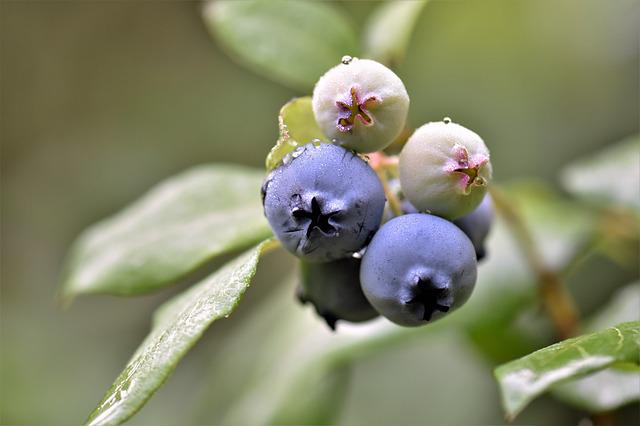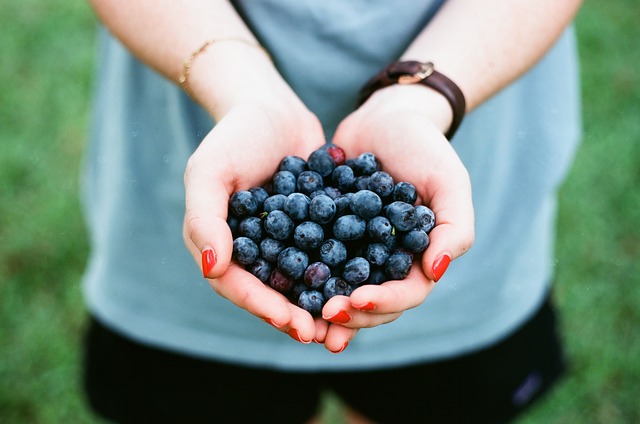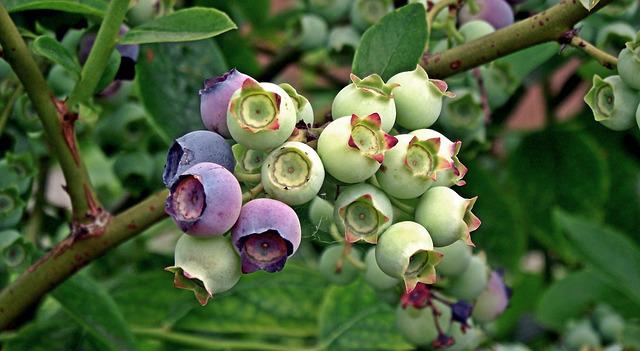Do Blueberries Grow On Vines?

Blueberries do not grow on vines. They are a type of shrub that grows in temperate zones. However, the fruit that we consume results from cross-pollination between two types of plants – the wild type, which is a lowbush blueberry, and a cultivated type, which is the more common type that we see in grocery stores.
The wild type is believed to have a higher concentration of nutrients and antioxidants and is thought to be more beneficial for our health. While Blueberries do have some benefits, they are not a complete replacement for other fruits and vegetables in our diet. They are best suited for people looking for a snack or dessert high in antioxidants and contain few calories.
Table of Contents
Types of Blueberry Bushes
Blueberries can be harvested from blueberry bushes. Hedgerows and landscaping trees are more common uses for Japanese blueberry trees. Choose from these varieties if you’d like to grow edible blueberries. For your climate, choose the ones that best suit your needs:
Highbush Blueberries
The canes of these blueberry bushes are arranged vertically. They have 1-inch dark green leaves and pink flowers. The leaves turn vibrant shades of red and orange as the season progresses. Highbush blueberries can grow up to 12 feet high. According to USDA Hardiness Zone 3, they thrive.
Lowbush Blueberries
USDA Hardiness Zone 2 is the best place to grow these blueberries. They have glossy, dark green leaves that are half an inch long. The white flowers are bell-shaped. In the autumn, the leaves turn a reddish-brown color. Lowbush blueberry bushes can reach a height of two feet on average.
Half-High Hybrid Blueberries
Blueberries from both highbush and lowbush varieties were used to cultivate these bushes. In terms of climate, they do best in zones 4 to 5. The petals are white. In the fall, the leaves turn a vibrant reddish-orange. They can grow up to a height of four feet.
Rabbiteye Blueberries
These large bushes can grow to 15 feet in the Southeastern United States, where they are native. They thrive in zones 8a to 9a of the hardiness scale. Rabbiteye’s leaves are green on top and blue-green on the underside. Bell-shaped pink flowers cover the ground.
Propagation
There are many options available to you when it comes to propagating your plants. If you’re looking for something more challenging, you can start seeds and cultivate your plants from bare roots, cuttings, and transplants.
Before planting your new plants, make sure to thoroughly prepare your soil. It can take a long time to significantly alter your soil.
Over several months, composting pine or sawdust in clay or sandy soil can help create the ideal conditions for blueberries to thrive.

Starting with a Seed
- Blueberries can be grown from seed, but it will take longer to get your first harvest than if you started with established plants.
- You can buy seeds or take them out of the berries and eat them. Seeds from hybrid plants will not produce plants that resemble their original parents.
- Blend a cup of blueberries with four cups of water in a blender to extract the seeds. Allow the mixture to sit for 10 minutes after running it for 15 seconds on high.
- As time passes, the pulp will float on top while the seeds fall to the bottom of the container.
- To replace what was poured out, add some more water and let it sit for five minutes. Continue until the water is clear and the seeds of blueberries are visible at the bottom.
- Sprinkle your seeds over a container of moistened peat moss a few months before your area’s last frost date.
- Cover with a thin layer of peat. Keep the moisture in by covering the tray with a piece of plastic or a humidity dome. Keep the seeds between 60-70°F (15.6-21.1°C).
- The wait begins now. The first time I do this, I’m certain my seeds are a flop, and I’m about to toss the whole thing out when I see the tiny green seedlings poking their heads out of the peat.
- This is because seeds can take up to three months to germinate.
- Seedlings should be removed from the peat and placed in six-inch pots filled with equal parts peat, sand, and potting soil once they are about three inches tall.
- Make sure the seedlings get six hours of sunlight a day by keeping the medium moist but not wet.
- This close-up horizontal photograph shows succulent Vaccinium shrubs ready for transplanting into the garden.
- If you wait until the danger of frost has passed before putting the plants in the ground outside, they may not be ready for transplantation for a week.
- After one hour outside in a sheltered spot with indirect light, seedlings can be brought back inside to finish hardening off. Adding one hour each day for a week will allow them to spend the entire day outside.
- Direct sowing in the garden is not recommended because the seeds require precise conditions.
Plant By Cuttings
- You can start new blueberry plants from hardwood cuttings taken from an older, healthy blueberry bush.
- Take a six-inch cutting from one-year-old wood in late winter when the plant is still dormant. As a general rule, you want a pencil-thin cut.
- Winter pruning of a Vaccinium shrub is depicted in this close-up horizontal shot.
- Cut it at an angle to help it sink into the soil and increase its surface area for water and nutrient uptake.
- Bury the cuttings two inches deep in a container with equal parts sand, peat moss, and potting soil.
- For the serious gardener, Arbico Organics offers these handy pots in quantities of 12, 180, or 450.
- The potting medium should be kept moist but not dripping wet. Your cutting should begin rooting within three months. A gentle tug on the cutting will tell you if this is the case.
- It is best to wait until after the risk of frost has passed before planting the rooted cuttings in their permanent locations.
- Create twice as large and deep a hole to house the cutting as it had been in its container. Spread the roots of the plant as you place it in the hole. If using pine or fir sawdust, backfill with soil and pine or fir sawdust.
- To bear fruit, rooted cuttings require two to three years of growth time than transplants.

By Bare Root
- Compared to transplants, bare-root plants are less expensive, but they require more work during the propagation process.
- Keep them in a cool, dark place if you cannot plant them as soon as they arrive in the mail or as soon as you get them home from the nursery. Spray the roots with a water bottle every day to keep them from drying out.
- Roots should be soaked in room temperature water for three to six hours before planting. Remove the plant from the water and cut off any broken roots.
- When planting a tree, dig a hole a few inches wider and deeper than the roots’ depth, then spread the roots horizontally rather than vertically.
- We’re trying to mimic the natural growth pattern of these shrubs, which prefers to have their roots near the soil’s surface rather than deep.
- Fill the hole back up with the dirt you dug out earlier. Use a watering can to settle the soil.
